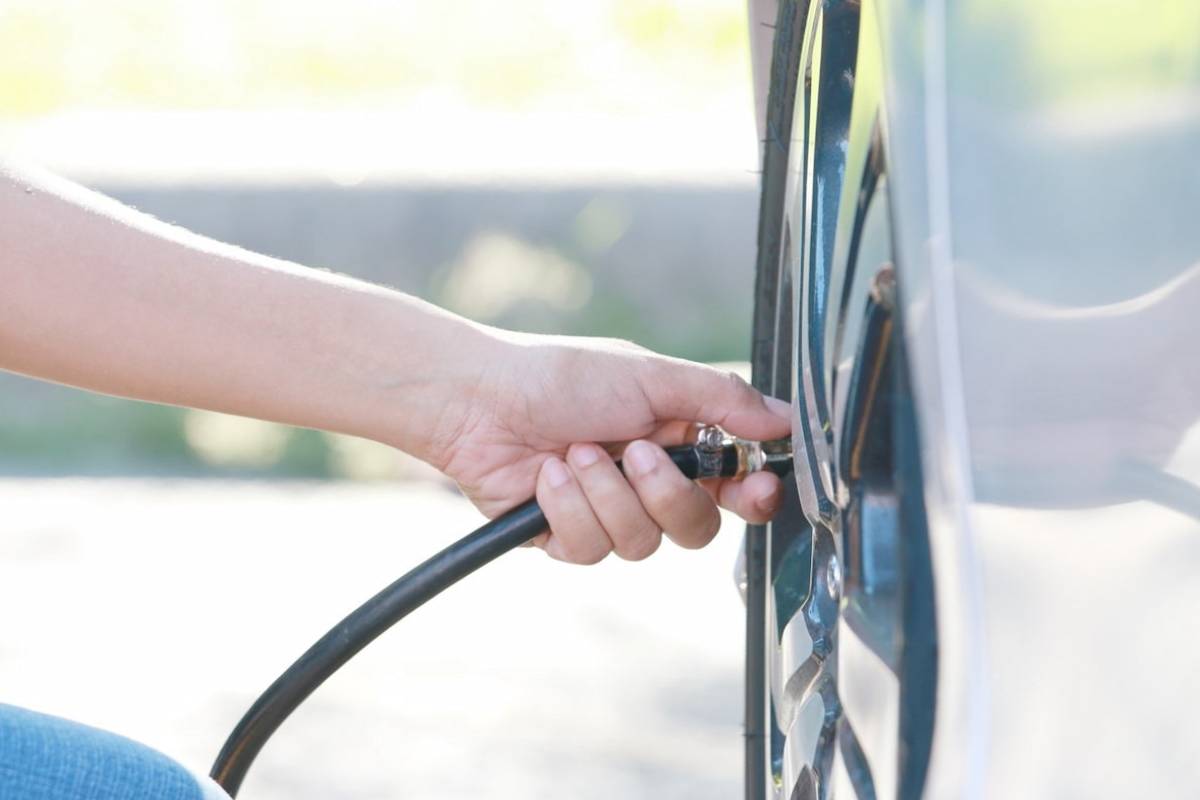Why You Should Never Let Your Tire Pressure Get Low

According to the Canada Safety Council, 23 per cent of vehicles are driving with at least one tire underinflated by 20 per cent or more. That’s a chance you shouldn’t take on the road. Here’s a guide to the risks and what to do to prevent low tire pressure.
Risks of Low Tire Pressure
Under-inflated tires are a leading cause of tire failure. More rubber touches the road, creating more friction and heat. Additional risks include:
- Potential for crashing. Undue stress on the tire can lead to a blowout, causing a sudden loss of control. Other drivers are also at risk as they may need to brake suddenly or swerve to avoid you.
- Reduced fuel efficiency. More rubber on the road makes your car work harder and use more fuel. Underinflated tires can decrease fuel efficiency by three per cent. With the price of gas these days, that’s significant.
- Poor handling. Cars running on underinflated tires can lose their grip on the road, giving you more trouble handling corners and requiring greater braking distance.
- Higher costs. Not only will you spend more on gas, but you’ll also need to replace your tires more often. The heat and friction will increase wear on your treads and lead to premature balding.
How to Check Your Tire Pressure
There’s a common misconception that you need to inflate your tires only when they appear flat. Low tire pressure isn’t usually noticeable with a routine visual check. Even if your car has a tire-pressure monitoring system, it’ll only warn you if your tires are deflated by more than 25 per cent, which is too late.
Here’s how to ensure you’re driving on safe tires:
- Find the manufacturer’s recommended tire pressure. It’s on a sticker on the driver’s side door jamb or in the owner’s manual. Don’t use the PSI recommendation on the tire itself, as this is the maximum allowed pressure and not necessarily the best pressure for your car.
- Purchase a digital or pencil-style tire gauge and check the air pressure in your tires. When doing this, your tires need to be cold, which means checking your tires first thing in the morning or three hours after driving.
- Fill your tires to the recommended pressure levels.
Experts recommend you check your tire pressure at least once a month.
Tires and Tire Repair in British Columbia
At Minit-Tune & Brake Auto Centres, we can replace worn tires and repair punctured tires. We’ll check and adjust low tire pressure with every oil change to ensure you’re driving on correctly inflated tires. Contact us to schedule an appointment at one of our 15 locations across British Columbia and Alberta.
MINIT-TUNE BLOG
Minit-Tune & Brake Auto Centres Address Common Issues
Here at Minit-Tune & Brake Auto Centres in British Columbia, we’re always pleased to help our customers get the most out of their cars and trucks. To that end, we’ll add a relevant blog topic from time to time to keep you up to date and getting the most out of your vehicle.
